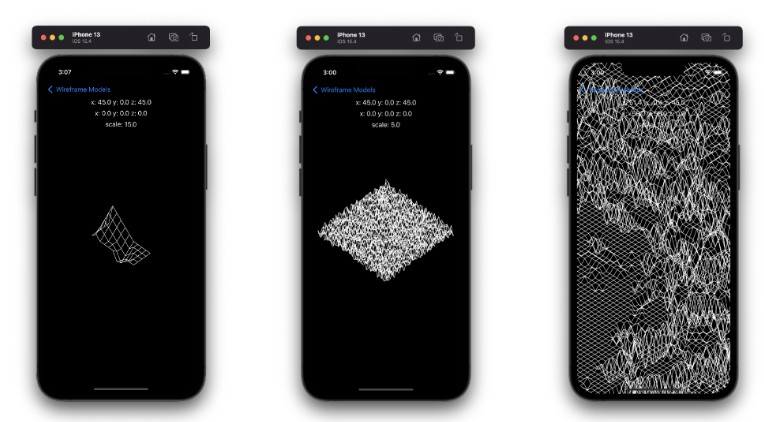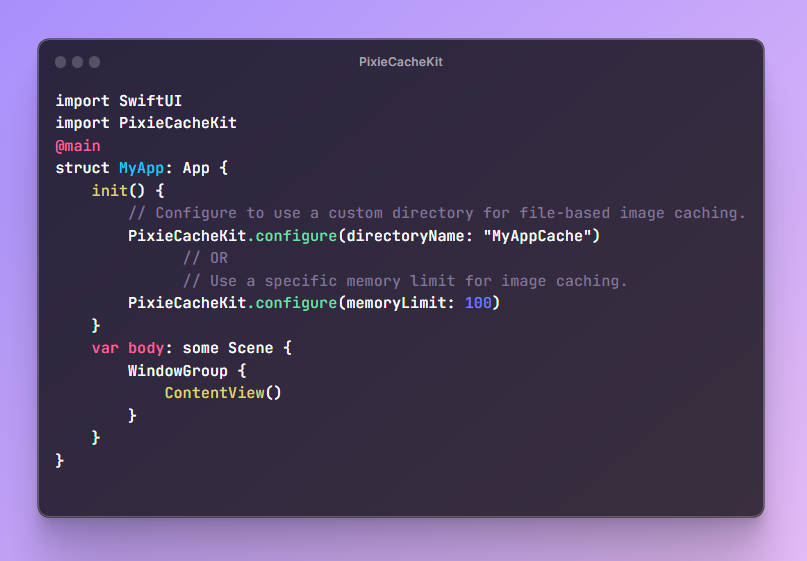A simple but surprisingly fancy Store
Boutique is a simple but powerful persistence library, and more. With its dual-layered memory + disk caching architecture Boutique provides a way to build apps that update in real time with full offline storage in only a few lines of code using an incredibly simple API. Boutique is built atop Bodega, and you can find a reference implementation of an app built atop the Model View Controller Store architecture in this repo which shows you how to make an offline-ready SwiftUI app in only a few lines of code. You can read more about the thinking behind the architecture in this blog post exploring the MVCS architecture.
Getting Started
Boutique only has one concept to understand, the Store. You may be familiar with the Store from Redux or The Composable Architecture, but unlike those frameworks you won’t need to worry about interacting with Actions or Reducers. With this Store implementation all your data is cached on disk for you automatically, no additional code required. This allows you to build realtime updating apps with full offline support in an incredibly simple and straightforward manner.
Store
The entire surface area of the API for achieving full offline support and realtime model updates across your entire app is three methods, .add(), .remove(), and .removeAll().
// Create a Store ¹
let store = Store<Item>(
storagePath: Store.documentsDirectory(appendingPathComponent: "Items"),
cacheIdentifier: \.id
)
// Add an item to the Store ²
let coat = Item(name: "coat")
try await store.add(coat)
// Remove an item from the Store
try await store.remove(coat)
// Add two more items to the Store
let purse = Item(name: "purse")
let belt = Item(name: "belt")
try await store.add([purse, belt])
// You can read items directly
print(store.items) // Prints [coat, belt]
// Clear your store by removing all the items at once.
store.removeAll()
print(self.items) // Prints []
// Add an item to the store, removing all of the current items
// from the in-memory and disk cache before saving the new object. ³
try await store.add([purse, belt], invalidationStrategy: .removeNone)
try await store.add(coat, invalidationStrategy: .removeAll)
print(store.items) // Prints [coat]
And if you’re building a SwiftUI app you don’t have to change a thing, Boutique was made for and with SwiftUI in mind.
// Since items is an @Published property
// you can subscribe to any changes in realtime.
store.$items.sink({ items in
print("Items was updated", items)
})
// Works great with SwiftUI out the box for more complex pipelines.
.onReceive(store.$items, perform: {
self.allItems = $0.filter({ $0.id > 100 })
})
The Magic of @Stored
That was easy, but I want to show you something that makes Boutique feel downright magical. The Store is a simple way to gain the benefits of offline storage and realtime updates, but by using the @Stored property wrapper we can cache any property in-memory and on disk with just one line of code.
final class ImagesController: ObservableObject {
/// Creates an @Stored property to handle an in-memory and on-disk cache of images. ⁵
@Stored(in: Store.imagesStore) var images
/// Fetches `RemoteImage` from the API, providing the user with a red panda if the request succeeds.
func fetchImage() async throws -> RemoteImage {
// Hit the API that provides you a random image's metadata
let imageURL = URL(string: "https://image.redpanda.club/random/json")!
let randomImageRequest = URLRequest(url: imageURL)
let (imageResponse, _) = try await URLSession.shared.data(for: randomImageRequest)
return RemoteImage(createdAt: .now, url: imageResponse.url, width: imageResponse.width, height: imageResponse.height, imageData: imageResponse.imageData)
}
/// Saves an image to the `Store` in memory and on disk.
func saveImage(image: RemoteImage) async throws {
try await self.$images.add(image)
}
/// Removes one image from the `Store` in memory and on disk.
func removeImage(image: RemoteImage) async throws {
try await self.$images.remove(image)
}
/// Removes all of the images from the `Store` in memory and on disk.
func clearAllImages() async throws {
try await self.$images.removeAll()
}
}
That’s it, that’s really it. It’s hard to believe that now your app can update its state in real time with full offline storage thanks to only one line of code. @Stored(in: Store.imagesStore) var images
Further Exploration
Boutique is very useful on its own for building realtime offline-ready apps with just a few lines of code, but it’s made even more powerful by the Model View Controller Store architecture I’ve developed, demonstrated in the ImagesController above. MVCS brings together the familiarity and simplicity of the MVC architecture you know and love with the power of a Store, to give your app a simple but well-defined state management and data architecture.
If you’d like to learn more about how it works you can read about the philosophy in a blog post where I explore MVCS for SwiftUI, and you can find a reference implementation of an offline-ready realtime MVCS app powered by Boutique in this repo.
Requirements
- iOS 13.0+
- macOS 11.0+
- Xcode 13.2+
Installation
Swift Package Manager
The Swift Package Manager is a tool for automating the distribution of Swift code and is integrated into the Swift build system.
Once you have your Swift package set up, adding Boutique as a dependency is as easy as adding it to the dependencies value of your Package.swift.
dependencies: [
.package(url: "https://github.com/mergesort/Boutique.git", .upToNextMajor(from: "1.0.0"))
]
Manually
If you prefer not to use SPM, you can integrate Boutique into your project manually by copying the files in.
About me
Hi, I’m Joe everywhere on the web, but especially on Twitter.
License
See the license for more information about how you can use Boutique.



